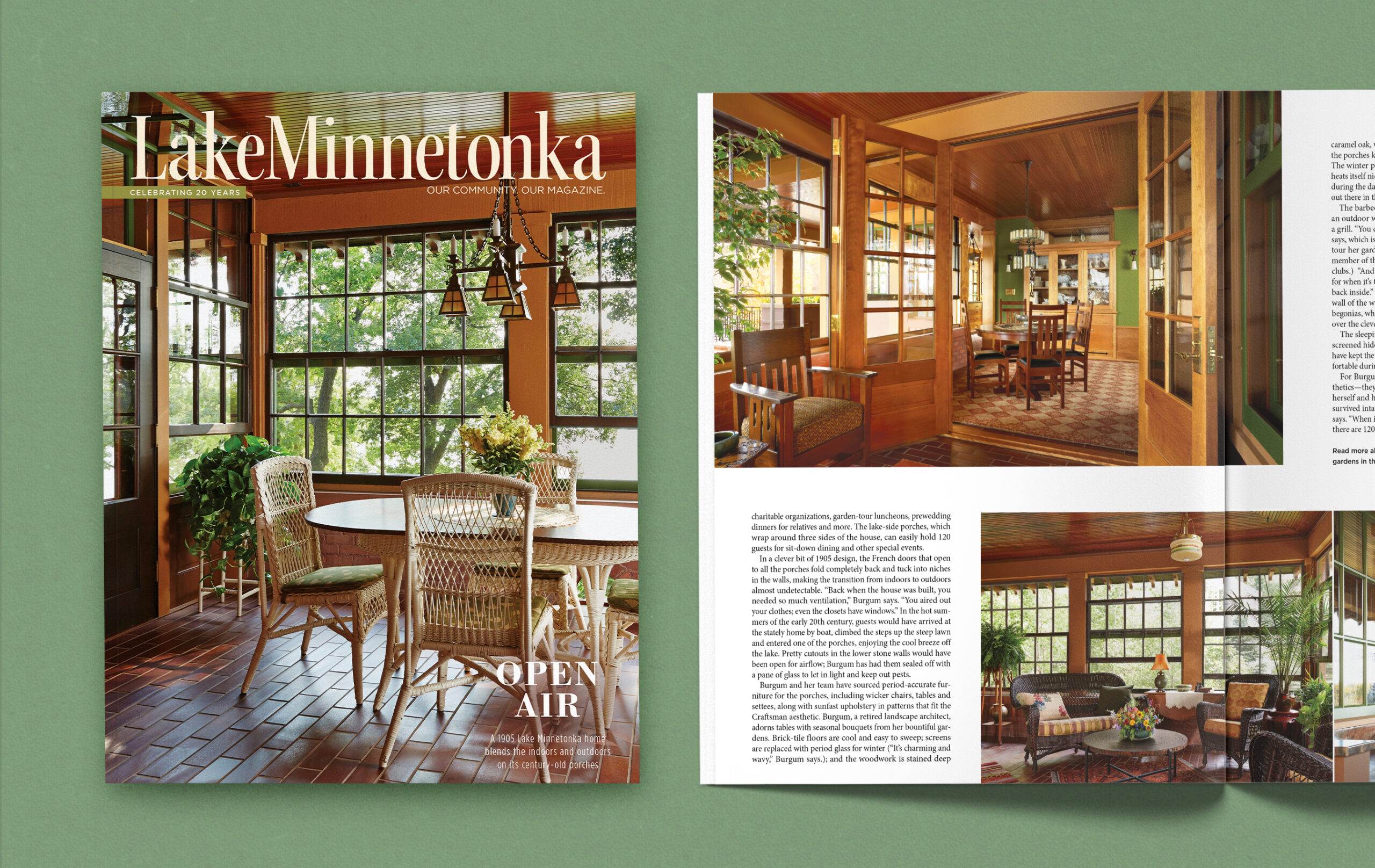
The living room of this Frank Lloyd Wright house was reconstructed and is on display at the Metropolitan Museum of Art in New York City.
Tearing down Frank Lloyd Wright’s Deephaven masterpiece.
When old houses are torn down along Lake Minnetonka to make way for more modern counterparts, architectural gems that don’t fit present-day tastes sometimes succumb to the wrecking ball. To visit one of Minnetonka’s best architectural examples that no longer exist, go to New York City and pay the price of admission at the Metropolitan Museum of Art.
In 1908, architect Frank Lloyd Wright had been commissioned to build a house for Francis Little and his wife Mary in Deephaven on a spot overlooking the lake. Wright’s Prairie School esthetic took advantage of the surrounding countryside, and he designed the house to fit into the landscape rather than the modern construction technique of clearing the land and planting new lollipop trees.
Soon after Wright took the commission, he traveled to Europe, then Japan and delayed construction of the house. Fortunately, Little and his family still had a house in the Kenwood neighborhood of Minneapolis, but they were frustrated with the delay. Rather than switch architects, Little had a small cottage built in the Prairie School style on the property so the family could take advantage of the lake while they waited for Wright.
Wright put banks of windows all along the water side of the house so the Littles could have a panoramic view of Lake Minnetonka. Francis objected to all the small window panes that Wright designed especially for the house since he preferred larger picture windows. The Little House had the typical Prairie School characteristic of long parallel roof lines—250 feet in this case—to fit into the horizon and the lake below. The open floor plan flowed from room to room, as Wright was influenced by Japanese design and the Asian idea of Feng Shui. One of the rooms had a small concert hall specifically for Mary, a virtuoso pianist who studied under composer Franz Liszt in Cologne, Germany.
Wright only built a dozen houses in Minnesota, relatively few considering he was born just across the river in Richland Center, Wisconsin. As one of the most famous architects in America, his houses have become tourist sites and his turbulent lifestyle has become legend since it was surrounded by axe murders, affairs and arrests—once even on Lake Minnetonka.
During the 1960s and ‘70s, teardown mania struck and Minnesota would never be the same. Minneapolis’ beautiful brick buildings and mansions were leveled, and Lake Minnetonka was not spared. The Littles had since passed on the house to new owners who were fed up with the idiosyncrasies of a Wright house with built-in furniture that couldn’t be moved, and the inevitable drafts and water problems in Wright’s houses.
Wright had been dead for more than a decade and had achieved the status of one of America’s all-time great architects. The idea of destroying this house, a perfect specimen of his Prairie School phase, was blasphemy to his fans. A group of enthusiasts contacted the Metropolitan Museum of Art to see if it could save this Midwestern masterpiece. The New York museum salvaged parts of the house so the current owners, descendants of the Littles’ daughter Eleanor, could build a more modern, smaller house that suited them.
In 1982, the concert hall from the Little House was installed at the Met with a grand view of Central Park, rather than the lake. Also that year, the museum sold a hallway from the house to the Minneapolis Institute of Arts that is proudly on display in the Ulrich Architecture and Design Gallery. The Allentown Art Museum in Pennsylvania purchased the library from the house. Wright aficionados now must travel to three cities to visit this classic piece of Lake Minnetonka history and Wright’s vision of connecting to the land through architecture.



























